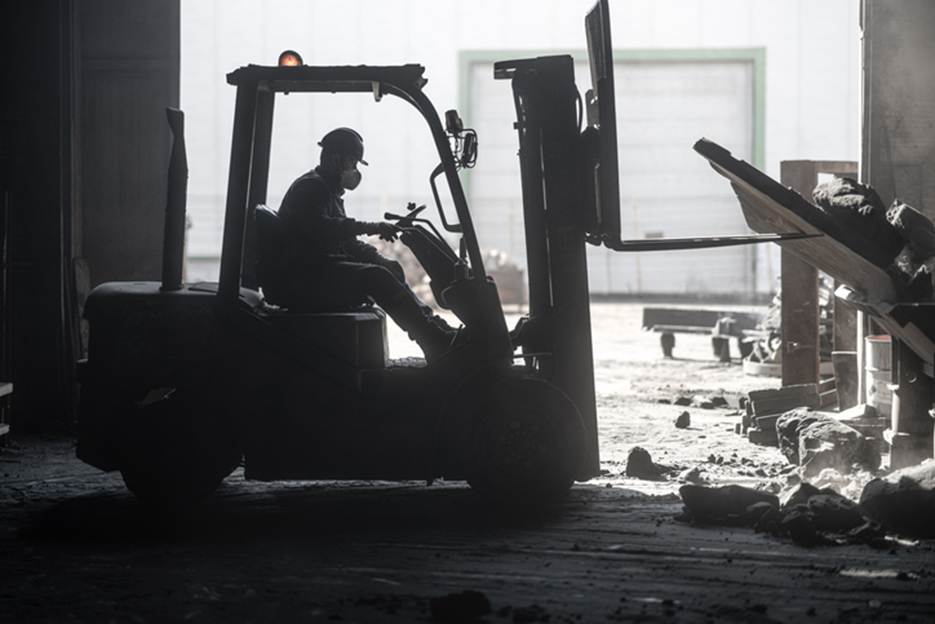
Construction Equipment Accidents: Who’s at Fault?
Heavy Machinery Should Never Be This Dangerous
Anyone who’s ever walked past a New York construction site knows the sound—grinding steel, hydraulic lifts, the steady hum of machines at work. For the workers inside those fences, those machines are part of the job. But when something goes wrong, they can turn deadly in seconds.
Bulldozers, cranes, forklifts, nail guns, power saws, each piece of equipment has the potential to crush, maim, or kill if it fails or is used improperly. At Horn Wright, LLP, our personal injury attorneys have represented workers injured by malfunctioning lifts, collapsing cranes, and electrical equipment that should’ve been grounded but wasn’t.
These aren’t “accidents” in the random sense. They’re the result of mistakes, neglected maintenance, or equipment that should never have been on a job site in the first place.
Common Equipment Malfunctions on New York Construction Sites
New York’s construction projects are massive, from skyscraper builds in Midtown to bridge maintenance across the East River. The heavy machinery that powers those jobs is complex, and when one part fails, people get hurt.
The most common equipment failures include:
- Crane collapses due to mechanical defects or poor assembly.
- Forklift malfunctions, like faulty brakes or hydraulic leaks.
- Electrical shocks from power tools or generators without proper grounding.
- Defective hoists and lifts, leading to sudden drops.
- Exploding compressors or pressurized tools, often caused by lack of inspection.
A single failure can injure multiple workers. In one Bronx warehouse build, for example, a malfunctioning lift dropped three workers after a hydraulic seal burst, a preventable disaster caused by skipped maintenance checks.
Every one of these incidents shares a theme: someone knew the risk, and someone ignored it.

Determining Whether the Employer, Manufacturer, or Operator Is Responsible
Finding out who’s at fault isn’t simple. Equipment accidents can involve multiple parties, each with their own lawyers, insurers, and excuses.
Here’s how fault often breaks down:
Employers and contractors:
Under New York Labor Law § 200, they have a general duty to provide safe worksites. If equipment isn’t maintained or if safety guards are missing, they can be held liable.
Manufacturers or distributors:
When the defect is built into the machine, say a crane’s safety switch fails, they may face product liability claims for design or manufacturing defects.
Operators or subcontractors:
Sometimes, the machinery itself works fine, but the operator doesn’t. Poor training, fatigue, or reckless use can turn even safe machines into hazards.
Federal rules also come into play. The Occupational Safety and Health Administration (OSHA) requires employers to maintain safe equipment under 29 CFR 1926.20. And when federal vehicles or machinery are involved, claims may fall under the Federal Tort Claims Act (FTCA), which has its own deadlines and restrictions.
Establishing fault means untangling a web of contracts, responsibilities, and safety regulations. A single overlooked inspection can shift liability from one party to another.
Evidence That Links Fault to Unsafe Machinery
After an equipment accident, companies often rush to remove the damaged machinery, inspect it privately, or even replace it before lawyers or investigators arrive. That’s why preserving evidence early is critical.
Important forms of evidence include:
- Maintenance logs showing when the machine was last inspected or repaired.
- Operator manuals and training records, proving whether workers were properly instructed.
- OSHA reports documenting prior violations or complaints.
- Expert mechanical inspections, identifying the exact defect or point of failure.
- Witness statements from coworkers or site supervisors.
Under Labor Law § 241(6), owners and contractors must comply with specific Industrial Code provisions. When those standards are ignored, say, when equipment is used beyond rated capacity, it can be direct proof of negligence.
And in federal cases under the FTCA, evidence gathered during administrative claims must be complete and accurate from the start. The government often won’t allow new evidence later. That’s why time, and the right legal help, matters so much.
New Hampshire Provides Fewer Options for Suing Equipment Manufacturers Than New York
Legal protection for injured construction workers looks very different once you cross state lines.
In New Hampshire, workers face tighter limits:
- Product liability laws make it harder to sue equipment manufacturers unless a very specific defect can be proven.
- Comparative negligence rules are strict, workers found more than 50% responsible can’t recover anything.
- Workers’ compensation is often the only remedy, and it excludes damages for pain, suffering, and emotional distress.
By contrast, New York gives injured workers broader recovery paths. Labor Laws §§ 200, 240, and 241(6) open the door to direct lawsuits against owners and contractors, while product liability allows claims against manufacturers and distributors.
That difference is massive. A Queens worker injured by a faulty nail gun could recover full damages in New York, while a Manchester worker hurt by the same defect might be limited to partial wage replacement.
Financial Recovery for Victims of Equipment-Related Accidents
Injuries caused by construction machinery are often catastrophic. Workers don’t just miss a few days, they face months of rehabilitation or permanent disability. The law allows compensation for every part of that loss.
Recoverable damages include:
- Medical costs, from emergency treatment to physical therapy and future care.
- Lost wages, including reduced earning capacity when workers can’t return to their old roles.
- Non-economic damages, such as pain, suffering, and loss of independence.
- Wrongful death recovery, under EPTL § 5-4.1, compensating families for lost support and funeral costs.
For workers on government projects, recovery might come through the FTCA or other federal programs. However, these have strict deadlines, sometimes just two years to file.
Insurance companies often undervalue machinery injury claims, arguing that workers “knew the risks.” Skilled lawyers know how to counter those tactics—showing that no one agrees to risk their life because someone failed to follow safety standards.
Why Legal Experience Matters in Machinery Injury Cases
Heavy equipment accident cases are different from most workplace injuries. They’re technical, evidence-heavy, and often involve multiple defendants. Without experience, even a small procedural mistake can destroy the case.
A seasoned lawyer understands how to:
- Reconstruct the accident using engineering experts.
- Subpoena manufacturers for internal defect reports.
- Navigate workers’ compensation while pursuing third-party claims.
- Coordinate between state, federal, and OSHA investigations.
In New York, where construction projects often involve layers of contractors and subcontractors, these skills make all the difference. A general practitioner might handle a car crash well, but construction machinery claims demand deep experience in both law and engineering.
When lives and livelihoods are at stake, that level of skill isn’t optional, it’s essential.
Horn Wright, LLP, Holds Negligent Parties Accountable for Equipment Accidents
Construction work keeps New York moving, but workers shouldn’t have to risk their lives because someone ignored a maintenance schedule or sold unsafe machinery.
At Horn Wright, LLP, our personal injury attorneys represent workers injured by defective, dangerous, or improperly maintained equipment. We dig into inspection records, challenge manufacturers, and hold negligent contractors accountable.
From Midtown high-rises to Long Island builds, our team knows how to navigate complex liability cases involving cranes, forklifts, and other heavy machinery. We fight for compensation that reflects what victims truly lose, not just their wages, but their health, confidence, and independence.
Machines should make construction safer, not more dangerous. When they don’t, we make sure responsibility falls where it belongs.

What Sets Us Apart From The Rest?
Horn Wright, LLP is here to help you get the results you need with a team you can trust.
-
Client-Focused ApproachWe’re a client-centered, results-oriented firm. When you work with us, you can have confidence we’ll put your best interests at the forefront of your case – it’s that simple.
-
Creative & Innovative Solutions
No two cases are the same, and neither are their solutions. Our attorneys provide creative points of view to yield exemplary results.
-
Experienced Attorneys
We have a team of trusted and respected attorneys to ensure your case is matched with the best attorney possible.
-
Driven By Justice
The core of our legal practice is our commitment to obtaining justice for those who have been wronged and need a powerful voice.

